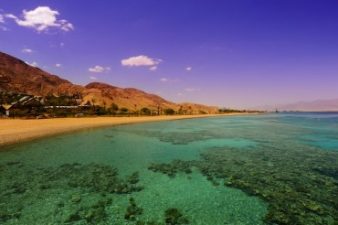 This spiny little creature can help us survive the Middle East water crisis.
This spiny little creature can help us survive the Middle East water crisis.
How do we value nature? Do we value trees for their role as carbon sinks? As hope in hard times, like Anne Frank did? Or must we dangle a giant price tag from a branch – put a number on that sucker – so our wallet feels the pinch as the last tree standing is felled? Or can we deepen our relationship with nature again, to learn from its infinite wisdom?
Last week we started a series that looks to fauna and flora for water conservation tips. We showed you how a beetle captures dew in the Namib desert, and how one enterprising company developed a water bottle that mimics that behavior. This week from Australia we have the Thorny Devil, whose spiny tricks are just as clever.Endangered and the only species in its genus, the Thorny Devil is not the prettiest lizard. Every part of its body is marked with intimidating spines: its tail, its eyebrows, and the bump behind its head. But behind the ugliness is a most beautiful survival technique.
Not only do the spines make Moloch horridus a daunting snack for some predators, but they also help the lizard capture water: standing water, dew, soil moisture. And all this with no moving parts, no pumps, and no energy expenditure.
David Attenborough, the renowned scientist who is best known for his almost anthropogenic depictions of nature via numerous books and documentaries, describes the spines:
“Each is scored with very thin grooves radiating from the central peak. During cold nights, dew condenses on them and is drawn by capillary action along the grooves and eventually down to the tiny creature’s mouth.”
The warren created by the spines increases the surface area in which water can aggregate, creating a system that allows the lizard – which grows up to 20 cm and lives for as long as 20 years – to cope in the dry regions of Western Australia and North and South Queensland.
According to the Biomimicry Institute, this is how we could mimic the Thorny Devil’s adaptation technique:
Passive collection and distribution systems of naturally distilled water could help provide clean water supplies to the 1 billion people estimated to lack this vital resource, reduce the energy consumption required in collecting and transporting water by pump action (e.g., to the tops of buildings), and provide a variety of other inexpensive technological solutions such as managing heat through evaporative cooling systems, protecting structures from fire through on-demand water barriers, etc.
Stay tuned for next week’s example of nature’s tricks. In the meantime, feel free to send in suggestions or other examples of water conservation or gathering techniques.
More on nature in the Middle East:



